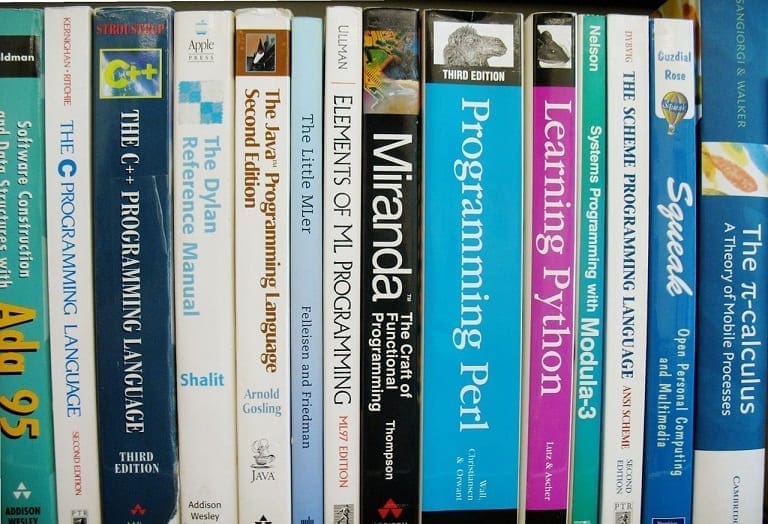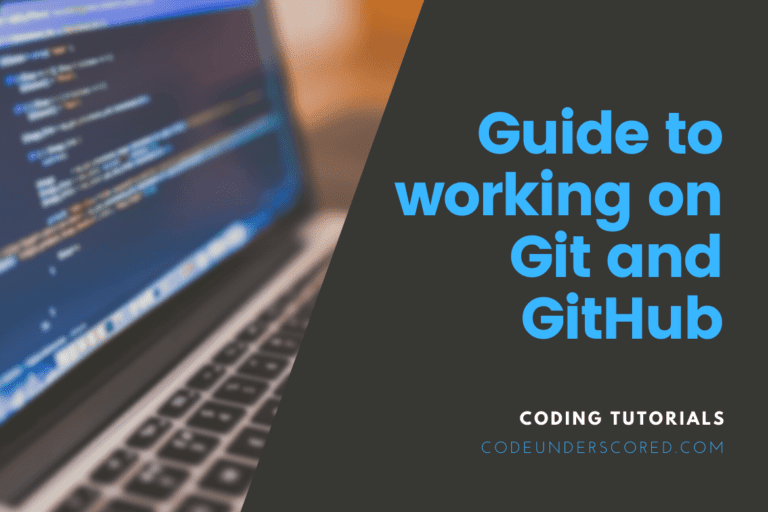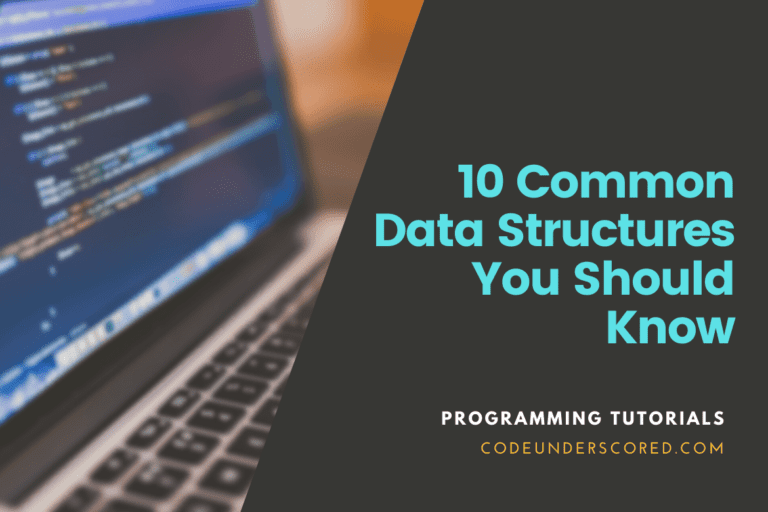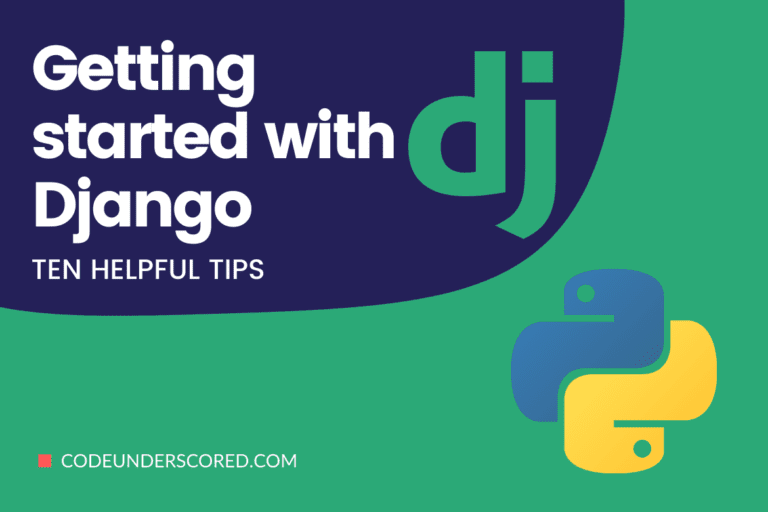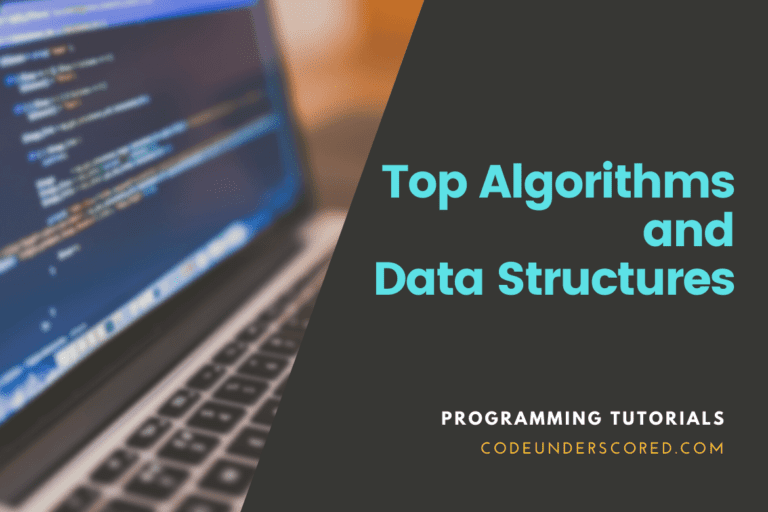A growing number of computer science professionals believe that a graduate degree is required for success in the area. As a result, schools are reacting to the need by providing various options, including both on-campus and online computer science master’s degrees, to meet the demands of students from all walks of life.
Like any other field of study, computer science has a history, processes, and enough conflicting viewpoints to fill a library.
We’ve produced a top ten list—Must-Read Books for Computer Science Majors for this category. The publications on this list cover everything from industry icon biographies to book-length love valentines to the first computers to how-tos. While the books on this list differ significantly, each is a classic that has remained a timeless addition to the ever-changing area of Computer Science and reflects the love that any successful Computer Science major should have for his chosen ability.
Best Books for Computer Science Student
If you’re thinking of getting a master’s in computer science, you should be well-versed and well-read. However, perhaps you’re seeking a computer science book that will both teach and inspire you. We are here to assist you with this.
Algorithms to Live By

Algorithms are the primary focus of computers. This book primarily teaches how to solve problems using various types of limitations that occur in real life.
The book teaches students how to use algorithms and suitable programming approaches to eventually find answers to diverse human concerns with the aid of a computer.
The book is written in plain English so that readers can fully comprehend the algorithms. In addition, this book contains numerous real-life examples to help readers relate to the theories more effectively.
Apart from literary knowledge, this book gives students a glance into the real world and takes them on a fascinating tour of artificial super brain functions.
The book’s features:
- Programming may be learned quickly using an algorithm.
- Educates students on how to calculate day-to-day tasks.
- In any activity, how to use algorithms
- The book is written thoroughly.
Cracking the Coding Interview by Gayle Laakmann McDowell

This is a book that can assist you in passing coding interviews, as the title suggests. When you have a programming interview, the material in the book will improve your chances of success. Of course, this should only be used as a supplement to your programming abilities.
I do not work as a recruiter. I work as a software developer. As a result, I’m familiar with being expected to come up with fantastic algorithms on the spot and then write immaculate code on a whiteboard. In addition, I’ve conducted interviews as both a candidate and an interviewer. Thus, I have been through this.
The sixth edition is now available to guide you through the process, teaching you everything you need to know and allowing you to perform at your best.
Learn how to decipher clues and hidden subtleties in a question, how to break down a problem into manageable bits, how to unstick yourself when you get stuck, how to learn (or re-learn) key computer science topics, and practice on 189 interview questions and solutions.
These are real interview questions, not the ones from a computer science textbook. Nevertheless, they represent what’s being asked at the best firms, so you’ll be fully prepared.
What’s on the inside?
There are one hundred eighty-nine interview questions about programming, ranging from the fundamentals to the most challenging algorithm challenges -a step-by-step explanation of how to arrive at each solution so you can learn how to do it yourself. The key take-aways include:
- You’ll get tips on how to answer each of the 189 questions, just like you would in an actual interview.
- There are five tried-and-true ways for tackling algorithm questions so you can answer problems you haven’t seen before.
- Coverage of essential topics such as Big O time, data structures, and basic algorithms is extensive.
- A look at how significant businesses like Google and Facebook hire developers from the inside.
- Behavioral questions are a great way to prepare for and ace the soft side of the interview.
- Details about what constitutes a successful interview question and the recruiting process for interviewers and organizations.
Python Crash Course, 2nd Edition

Python Crash Course is the best-selling introduction to the Python programming language in the world. This fast-paced, comprehensive introduction to Python programming will have you developing programs, solving issues, and creating functional objects in no time.
You’ll study basic programming concepts like variables, lists, classes, and loops in the book’s first half and practice clean code-writing with exercises for each topic. You’ll also learn how to develop interactive applications and how to test your code before using it in a project. Then, in the second part, you’ll put your new skills to work on three major projects: Space Invaders-inspired arcade game, a series of data visualizations using Python’s valuable libraries, and a simple web app that you can publish online.
You’ll learn how to do the following as you proceed through the book:
- Use sophisticated Python libraries and tools, such as Pygame, Matplotlib, Plotly, and Django
- Create 2D games that respond to keystrokes and mouse clicks, and that gets more difficult as you progress
- Create interactive visualizations using data
- Handle mistakes and failures so that you can solve your programming difficulties
- Create and configure web apps and launch them safely online
Python Crash Course can get you developing simple programs quickly if you’ve been thinking about getting into programming. So why put it off any longer? Start your engines and get ready to code!
CompTIA A+ Certification

The new 2019 CompTIA Core 1 and Core 2 CompTIA A+ exam objectives have been extensively rewritten in the blockbuster on-the-job reference and test preparation book.
This completely redesigned and updated resource covers the most recent CompTIA A+ examinations 220-1001 and 220-1002. In addition, you’ll find at the beginning of each chapter study objectives, test advice, practice exam questions, and in-depth explanations. This complete guide is designed to help you pass the CompTIA A+ tests efficiently and acts as an essential on-the-job IT reference.
All exam topics are covered, including how to:
- Troubleshoot and fix computer problems
- Work with CPUs, RAM, BIOS, motherboards, power supply, and other components found in personal computers.
- Install, configure, and keep hard disks in good working order.
- Manage input devices and portable media
- Set up, upgrade, and maintain all versions of Windows
- Configure and protect mobile devices
- Connect to the Internet
- Set up wired and wireless networks
- Protect your personal computer and network
- Implement virtualization and cloud-based technologies
The following are examples of online content:
- Over an hour of free video instruction
- TotalSim simulations with performance-based questions
- Practice tests for 1001 and 1002 Mike Meyers’ preferred PC utilities and tools
Table of Contents:
- Chapter 1: Safety and Professionalism
- Chapter 2: The Visible Computer
- Chapter 3: CPUs Chapter 3
- Chapter 4: RAM
- Chapter 5: Firmware
- Chapter 6: Motherboards
- Chapter 7: Power Sources
- Chapter 8: Mass Storage Technologies
- Chapter 9: Implementing Mass Storage
- Chapter 10: Essential Peripherals
- Chapter 11: Building a Computer
- Chapter 12: Under the Hood Windows
- Chapter 13: Users, Groups, and Permissions
- Chapter 14: Maintaining and Optimizing Operating Systems
- Chapter 15: Working with the Command-Line Interface (CLI)
- Chapter 16: Troubleshooting Operating Systems
- Chapter 17: Display Technologies
- Chapter 18: Essentials of Networking
- Chapter 19: and Local Area Networking
- Chapter 20: Wireless Networking
- Chapter 21: Internet
- Chapter 22: Virtualization
- Chapter 23: Portable Computing
- Chapter 24: Understanding Mobile Devices
- Chapter 25: Mobile Device Care and Feeding
- Chapter 26: Printers and Multifunction Devices
- Chapter 27: Securing Computers
- Chapter 28: Operational Procedures
- Appendix A: CompTIA A+ Objectives Mapping
- Glossary
Life 3.0: Being Human in the Age of Artificial Intelligence

What impact will artificial intelligence have on crime, war, justice, jobs, society, and our sense of self? The rise of artificial intelligence (AI) has the potential to impact our future more than any previous technology, and no one is better prepared or positioned to do it than Max Tegmark, an MIT professor who has contributed to mainstream research on how to keep AI beneficial.
How can we increase our prosperity through automation without robbing people of their livelihood or a sense of purpose? What is the best career advice we can give today’s youth? How can we make future AI systems more resilient so that they can accomplish exactly what we want without crashing, failing, or being hacked? Should we be concerned about a lethal autonomous weapons arms race? Will machines someday outsmart us at all tasks, displacing humans from the workforce and possibly out of existence? Will AI make life better than it has ever been, or will it give us more power than we can handle?
What kind of future do you hope to have? This book gives you the tools you need to participate in what could be the most important conversation of our time. It doesn’t shy away from a wide range of opinions or the most contentious problems, such as superintelligence, meaning, consciousness, and the universe’s ultimate physical limitations.
Automate the Boring Stuff with Python, 2nd Edition

It’s a Complete Beginner’s Guide to Programming. Python 3 is used to teach even non-technical people how to develop programs that perform. What ordinarily takes hours to finish by hand can be completed in minutes now. Liberal arts majors and geeks alike like the book, and it requires no prior programming knowledge.
You know how tiresome chores like this can be if you’ve ever spent hours renaming files or updating hundreds of spreadsheet cells. But what if you could delegate these tasks to your computer?
In this book, you’ll learn how to use Python to develop programs in a few minutes – what would take you hours to perform by hand if you didn’t have any programming experience knowledge. The Second Edition of the best-selling classic Automate the Boring Stuff with Python has been completely redesigned. It will help you master the fundamentals of Python and then dig into the language’s vast collection of modules for tasks like scraping data from websites, reading PDF and Word documents, and automating clicking and typing.
This international fan favorite’s second Edition features a brand-new chapter on input validation, as well as tutorials on automating Gmail and Google Sheets, as well as suggestions on updating CSV files automatically. You’ll learn how to write programs that can automate a variety of tasks, including:
- Create, update, transfer, and rename files and directories
- Search for text in a file or across many files
- Update and format data in any size Excel spreadsheet
- PDFs can be split, merged, watermarked, and encrypted
- Respond to emails and send text messages Completing online forms
Step-by-step instructions guide each program, and updated practice projects after each chapter encourage you to enhance those programs and apply your acquired skills to automate comparable jobs.
Are you spending your time doing tasks that a well-trained monkey could complete? You can delegate the grunt work to your computer if writing a piece of code is Greek to you. The 2nd Edition of automating the boring stuff with Python shows you how.
The Age of Surveillance Capitalism

At the New Frontier of Power, it’s The Fight for a Human Future – the first extensive analysis of the unprecedented kind of power known as “surveillance capitalism,” as well as the quest by big businesses to predict and control our behavior, are among the problems that the digital future poses to humanity.
Shoshana Zuboff offers surprising insights into the phenomenon she dubs “surveillance capitalism” in this masterwork of unique thinking and investigation. She alludes to the twenty-first century being at its best; worldwide infrastructure of behavior modification challenges human nature, just as industrial capitalism did in the twentieth.
As surveillance capitalism spreads from Silicon Valley to every economic sector, Zuboff graphically depicts the consequences. In terrifying new “behavioral futures markets,” where predictions about our conduct are bought and sold, and the creation of goods and services is subordinated to a new “means of behavioral modification,” vast money and power are amassed.
The threat has changed from a totalitarian Big Brother state to a pervasive digital architecture: a “Big Other” serving surveillance capital’s interests. It is the testbed for a new kind of authority characterized by significant concentrations of information and a lack of democratic scrutiny. Zuboff’s extensive and poignant analysis exposes the hazards to 21st-century society: a controlled “hive” of unlimited connectedness that seduces with promises of ultimate certainty for maximum profit — at the expense of democracy, freedom, and our human future.
Surveillance capitalism is on the approach of dominating the social order and determining the digital future, with no resistance from law or society — if we allow it.
Design Patterns: Elements of Reusable Object-Oriented Software

The book is about the various types of patterns required to create various types of software required for the proper operation of super brains.
Four top-notch designers give a library of brief and straightforward answers to often occurring design difficulties, gathering a plethora of knowledge about object-oriented program design. These 23 previously undocumented patterns help designers to develop without having to rediscover the design solutions, more flexible, elegant, and ultimately reusable designs
The authors begin by defining patterns and how they might aid in the development of object-oriented software. They then name, explain, assess, and categorize recurring designs in object-oriented systems in an organized manner. With Design Patterns as your guide, you’ll discover how crucial patterns fit into the software development process and how to use them to solve your design challenges quickly and effectively.
These patterns are also necessary for the software to function correctly. This book explains how software is built and systematically run over a long time using many patterns.
This type of software is required for the computer’s many programs to function correctly. This design pattern book educates students about the designs’ hearts, specifications, and features. These are gradually integrated into the suitable software to function correctly.
The book’s features
- A thorough understanding of the software’s patterns and designs
- It provides a clear picture of how various software is developed.
- The software’s basic functionality after it’s been designed utilizing design patterns
- The book’s language is appropriate for students studying computer science engineering.
Hands-On Machine Learning with Scikit-Learn, Keras, and TensorFlow

It covers Intelligent Systems Concepts, Tools, and Techniques -Deep learning has strengthened the entire area of machine learning thanks to a series of recent advancements. As a result, even programmers with little or no experience with this technology may now utilize simple, efficient tools to create data-driven programs.
This easy-to-follow guide will show you how.
Author Aurélien Géron helps you obtain intuitive knowledge of the principles and tools for building intelligent systems using straightforward examples, minimal theory, and two production-ready Python frameworks—Scikit-Learn and Tensor Flow. The starting point addresses the concept of simple linear regression. Subsequently, it progresses to break down deep neural networks; you’ll study a variety of strategies. To get started, all you need is programming experience and the exercises in each chapter to help you apply what you’ve learned. The core concepts comprise of:
- Investigate the field of machine learning, particularly neural networks.
- Make use of Scikit-Learn.
- Learn how to follow an example machine-learning project from start to finish.
- Support vector machines and ensemble approaches are some of the training models to explore random forests and decision trees.
- To create and train neural networks, use the Tensor Flow library.
- Convolutional nets, recurrent networks, and deep reinforcement learning are all examples of neural net designs.
- Discover how to train and scale deep neural networks.
Ten Arguments for Deleting Your Social Media Accounts Right Now

Ten Reasons to Get Rid of Your Social Media Accounts is a timely call to arms from a Silicon Valley pioneer, Right Now.
It is impossible in this age to even imagine living without social media accounts; virtual reality pioneer Jaron Lanier believes we are better off without them. Lanier, who does not use social media, provides compelling and personal reasons for all of us to abandon these harmful internet platforms before it is too late in his essential new audiobook.
The tendency of social media to bring out the worst in us, make politics terrifying, diverge our original understanding of truth, and lie to us about imaginative success and popularity are among Lanier’s reasons for breaking free from its poisonous grip. In addition, it also addresses the illusion of increased connectivity in the current world when the reality is that we are more disconnected from each other than we have ever imagined before. How can we maintain our autonomy in a world where we are continuously monitored and prodded by algorithms operated by some of the world’s wealthiest firms, who have no other method of making money except manipulating our behavior? How can the “benefits” of social media possibly balance the irreversible loss of our dignity, happiness, and freedom?
While exposing the evil that now governs social media economic structures, Lanier also envisions a humanistic setting for social networking that can lead us to a deeper and fuller way of living and engaging with our reality.
Superintelligence: Paths, Dangers, Strategies

This book concerns itself with the outcomes at the point when machines supposed humans in terms of intelligence. Will we be saved or destroyed by artificial intelligence? Nick Bostrom provides the groundwork for comprehending humanity’s intelligent life’s destiny.
The human brain possesses capacities that other animals’ brains do not. Our species’ dominant position is due to these specific abilities. If computer brains outperformed human brains in general intelligence, a new superintelligence may emerge that is incredibly strong – and possibly beyond our control. Thus, the fate of people would be determined by the activities of the machine superintelligence, much as the fate of gorillas presently depends more on humans than on the species itself.
However, we do have one advantage: we get to move first. Will it be possible to build a seed Artificial Intelligence and engineer beginning conditions to prevent an intelligence explosion? How could a controlled detonation be achieved?
This enormously ambitious and unique book traverses a vast and challenging intellectual landscape. After an incredibly enthralling voyage to the boundaries of thinking about the human condition and the future of sentient life, Nick Bostrom’s work is nothing less than a rethinking of the most critical mission of our time.
Conclusion
This article has examined the classic, trendy books that any computer science major will be interested in. Of course, our coverage is not conclusive, but it is an excellent pointer to what computer scientists are most interested in – in the 21st Century. The topics covered herein are diverse and range from machine learning, social media, operating systems, design patterns, surveillance, CompTIA, algorithms, and programming. We hope our selection has been a great read and helpful in your exploration of computer science.

